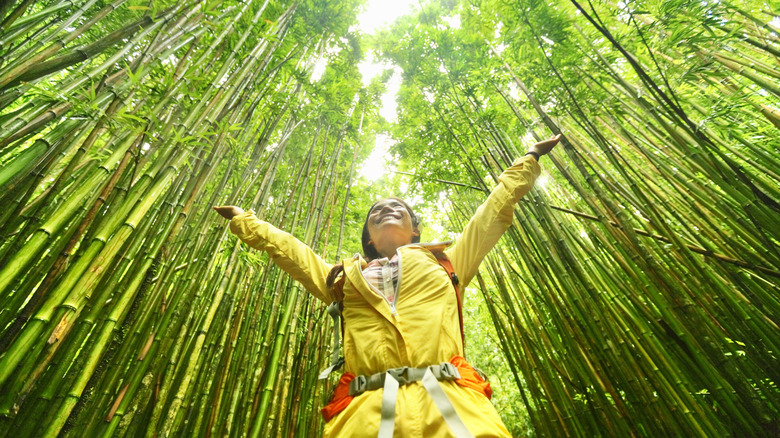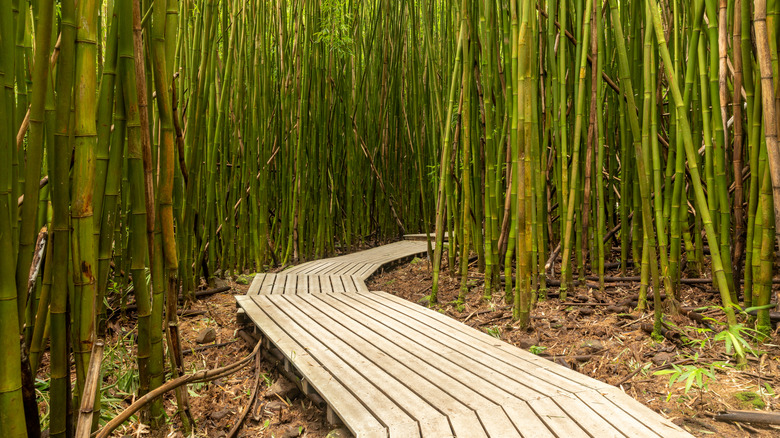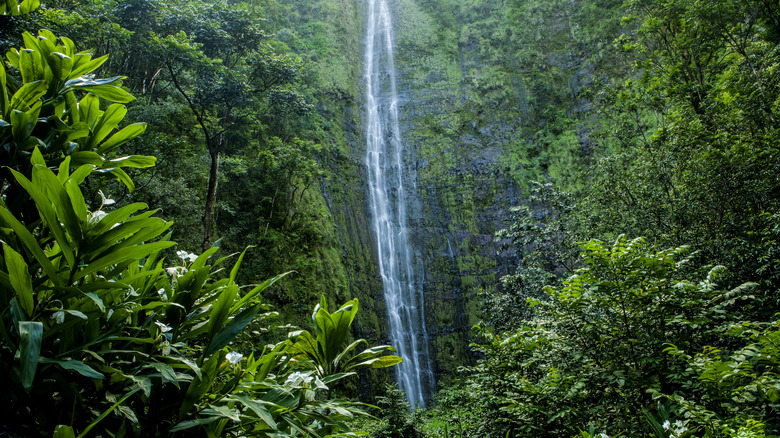If only allowed to visit one tropical paradise in your lifetime, you might very well pick Haleakalā National Park. This is a land of rolling volcanic slopes, a colorful range of bird species, and 30 miles of hiking trails. You can set up a tent on one of the local campgrounds, then wake up to one of the most celebrated sunrises in Hawaii; any clear morning, you’ll see why Haleakalā means “house of the sun” in the Hawaiian language.
You’ll have to make reservations in advance for most of these activities, which can be annoying, but the National Park Service uses this system to manage crowds; the park still attracts more than a million visitors each year. Located on the eastern coast of Maui, Haleakalā is just under an hour’s drive from Kahului Airport, the island’s main entry point.
You could spend days exploring Haleakalā, but if you’re short on time, your best bet is the Pipiwai Trail, a four-mile out-and-back hike on the eastern side. The route usually takes two to four hours, and is rated as “moderately challenging.” But you get a lot of bang for you buck: Pipiwai cuts through magnificent rainforest scenery, a storybook bamboo forest, and concludes with a waterfall straight out of a movie. Pipiwai is the Hawaiian backcountry at its best, catering to both seasoned and inexperienced hikers. You could add it to a list of adventurous things to do in Maui.
Finding and hiking the Pipiwai Trail
The Pipiwai Trailhead stands on the eastern coast of Maui, right next to the seaside Kipahulu Campground. Not surprisingly, many people camp out overnight, then spend a morning or afternoon on the trail. Before you get started, you’ll have to pay a $30-per-vehicle fee to enter Haleakalā National Park, which is valid for three days. You should come prepared; the trail can get sunny and hot, and insects are common, so sunblock, drinking water, and repellent are all good ideas. Also bring sturdy footwear; the trail is largely rugged, with lots of rocks and roots, and you’ll ascend about 800 feet by the time you finish.
The trail’s highlights include a cliffside view of Makakiku Falls, which descends nearly 200 feet into a lush canyon, as well as an enormous banyan tree, which measures 60 feet in diameter and has been rooted here for over a century. Hopscotch over bridges and waterfalls until you reach the bamboo forest, where dense green palisades rise all around a central boardwalk. Folks who have traveled to Japan have compared this stretch to Arashiyama, Kyoto’s serene walk through a breathtaking bamboo forest. The trail’s denouement is Waimoku Falls; here, water slides 400 feet down a mossy stone trough, hemmed in by dense forest.
Like many trails, the route back can be just as challenging, especially on a hot or rainy day. Watch out for falling rocks, wet surfaces, and — after a storm — flash floods, which are all possible dangers on Pipiwai. You’ll likely pass other hikers, but it’s prudent to hike this trail with at least one other person, even in ideal conditions.




